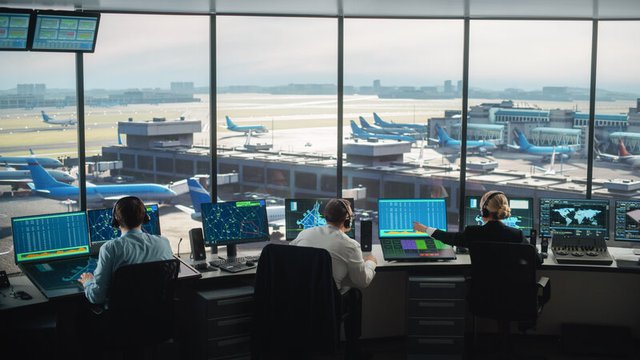
August is a time when many of us take a break from the daily routine and enjoy some well-earned rest and time to recharge our batteries. But as we fly off to far flung places in the world, and the airports experience a spike in the number of travellers, spare a thought for a key group of workers who will be busier than ever – air traffic controllers. They are the unsung heroes working behind the scenes to manage and coordinate the constant flow of planes in the airspace.
In this blog post, we will delve into the responsibilities of an air traffic controller, the significance of their role, and the steps you can take to pursue a rewarding career in this field, such as studying an Aerospace Engineering degree.
An air traffic controller is a trained professional responsible for providing instructions and guidance to pilots to ensure the safe take-off, landing, and en-route navigation of aircraft. These skilled individuals work in control towers and area control centres to maintain the orderly flow of air traffic. Their main objective is to prevent collisions and minimise delays while maintaining a high level of aviation safety.
The importance of air traffic controllers cannot be overstated. They act as the eyes and ears of the skies, monitoring radar displays and communication systems to keep track of aircraft in their designated airspace.
By managing aircraft movements efficiently, air traffic controllers help prevent potentially catastrophic accidents and maintain a smooth flow of air traffic, which is essential to avoid congestion and minimise flight delays, meaning we can all get to our destinations safely and on time.
Air traffic controllers have a diverse range of responsibilities that require split-second decision-making and unwavering focus. Some of the key tasks carried out by these professionals include:
Becoming an air traffic controller requires a unique set of skills, abilities, and characteristics, such as:
To embark on a career as an air traffic controller, aspiring candidates need to pursue specific educational and training paths. Each country has its own set of regulations in order to be a registered air traffic controller. A common route into the sector is to complete a degree in aviation, such as the one mentioned previously. These degrees cover topics such as aviation regulations, meteorology, navigation procedures, and air traffic control systems.
Following on from this, candidates apply to the aviation authorities and undertake specialised training. Candidates must pass rigorous aptitude tests, medical examinations, and background checks as part of the selection process.